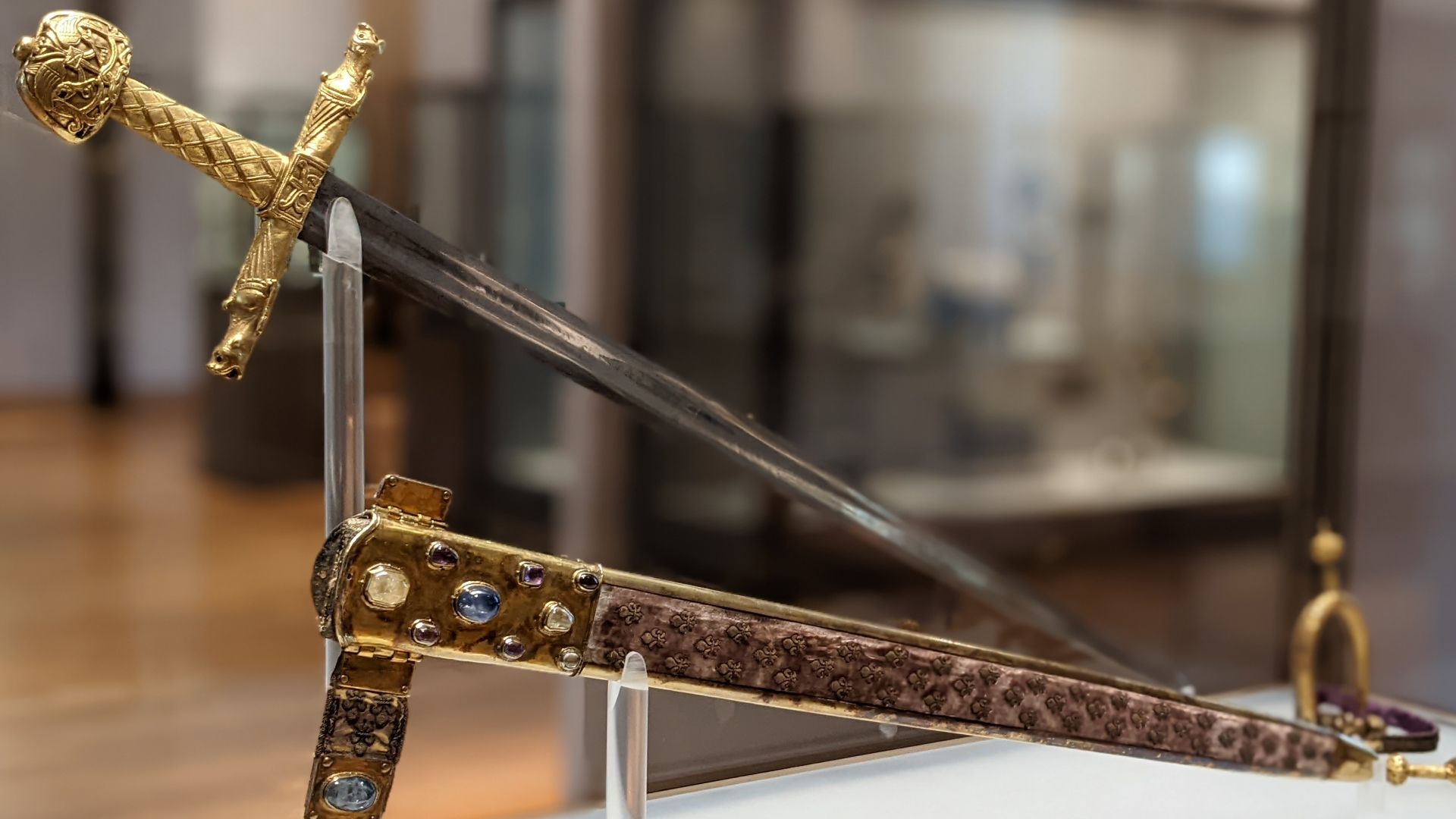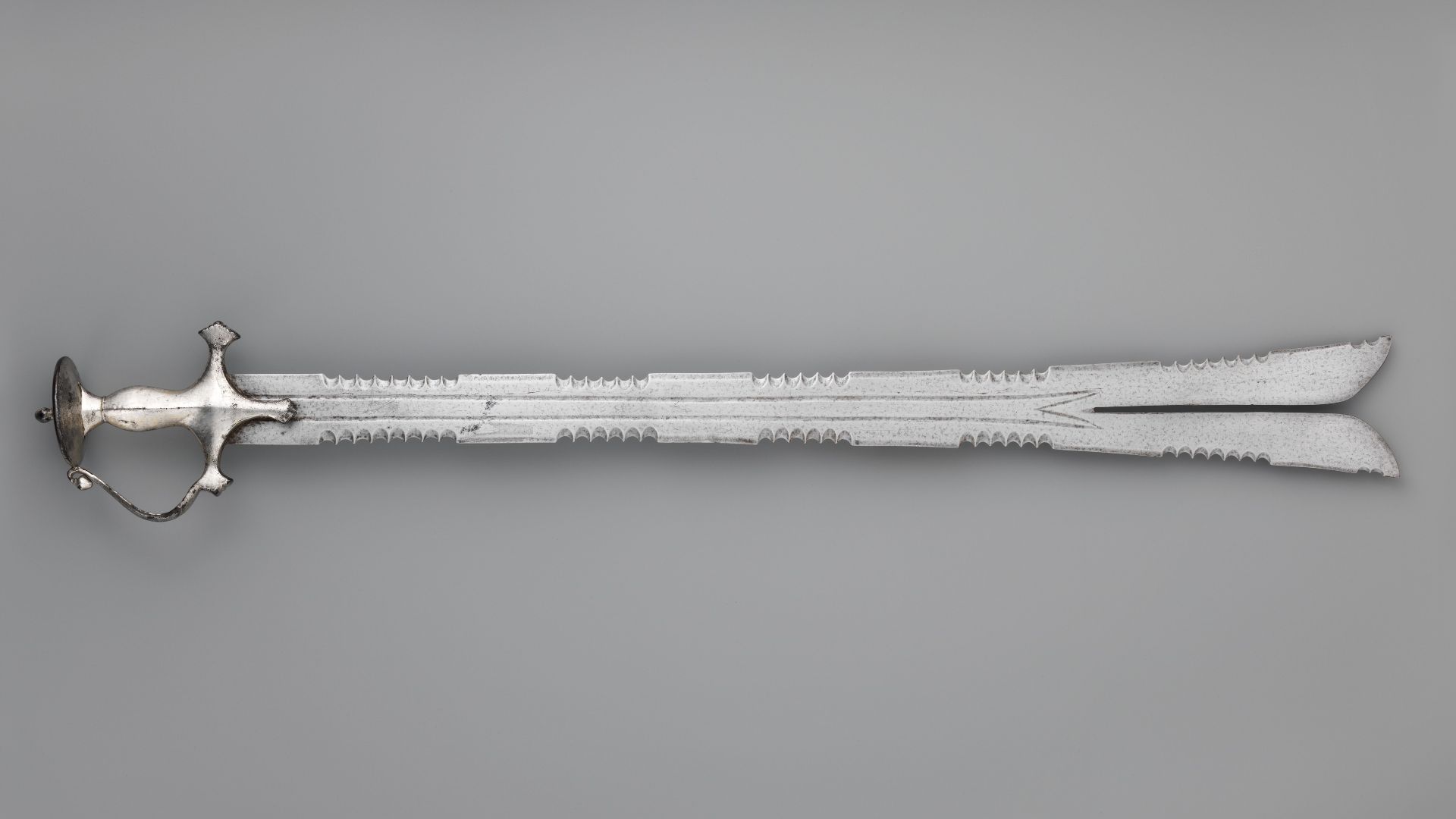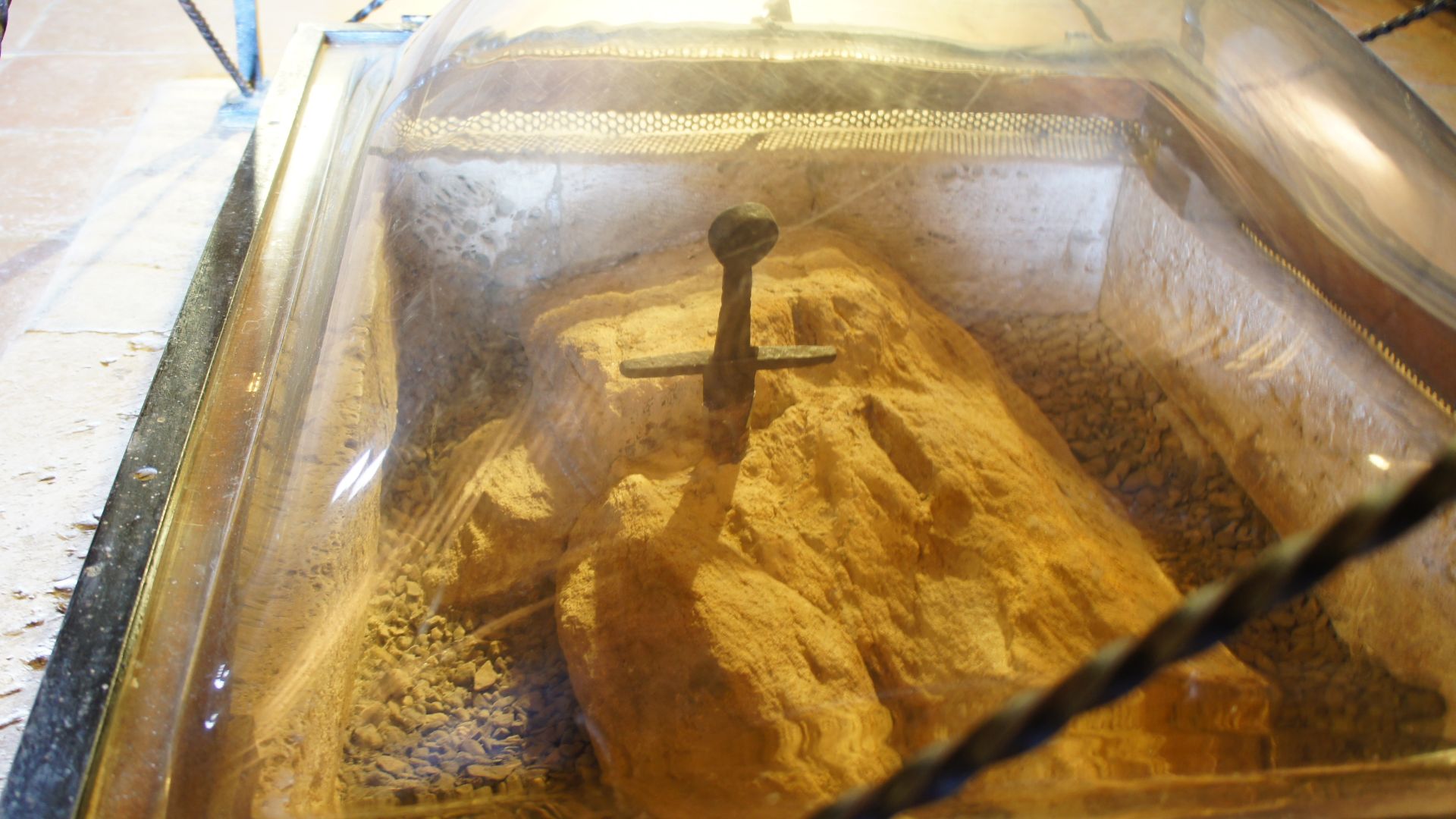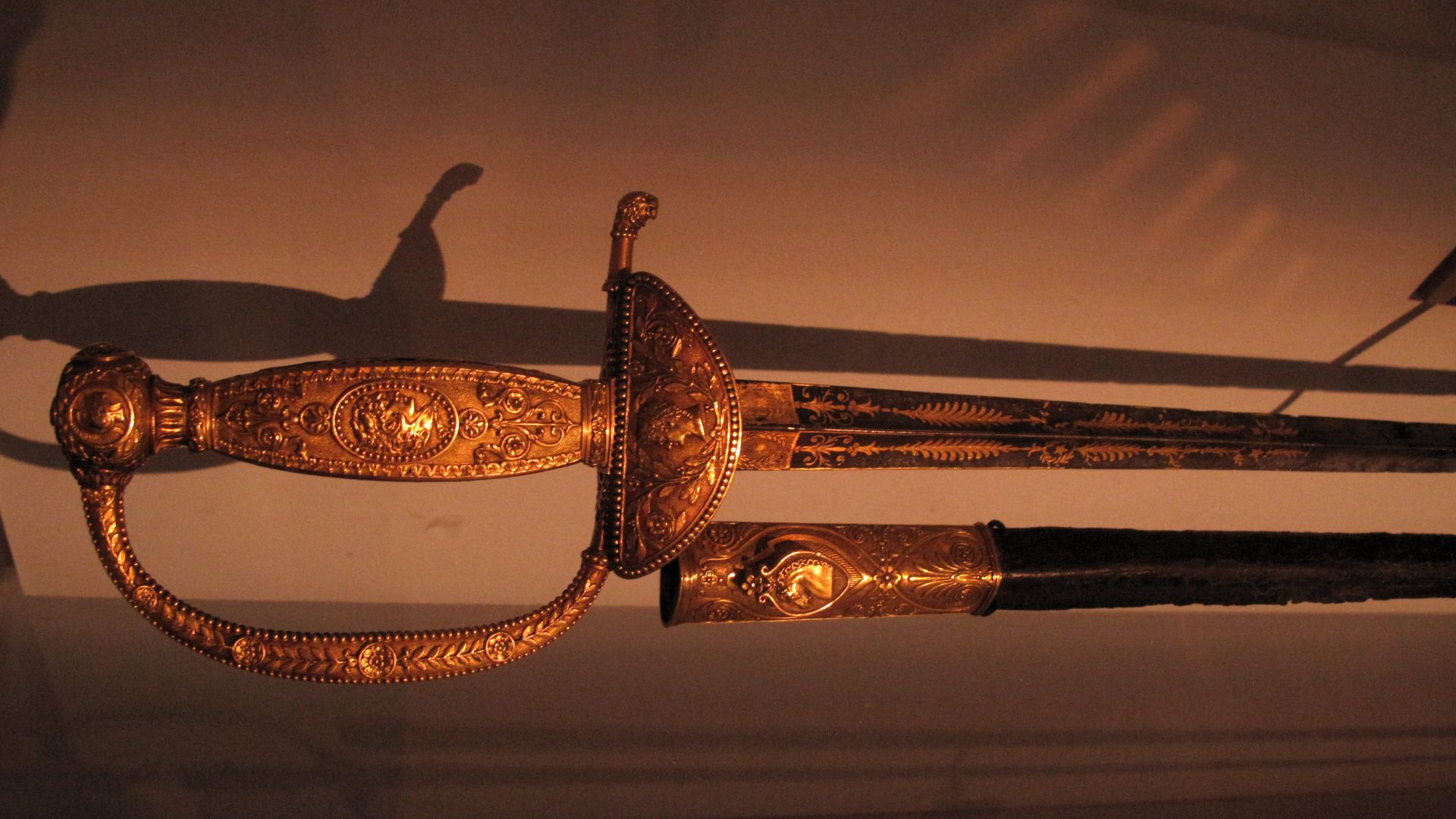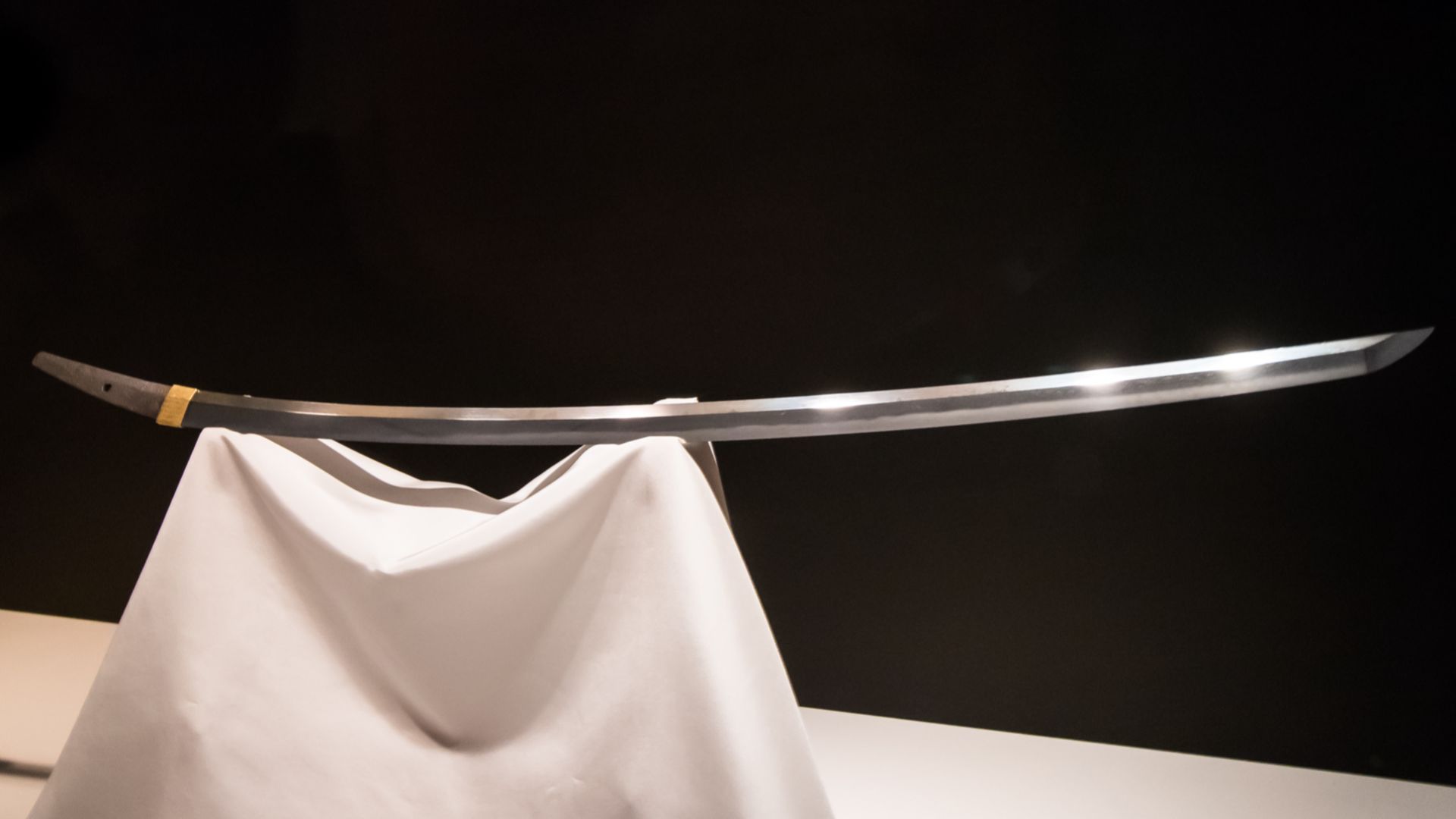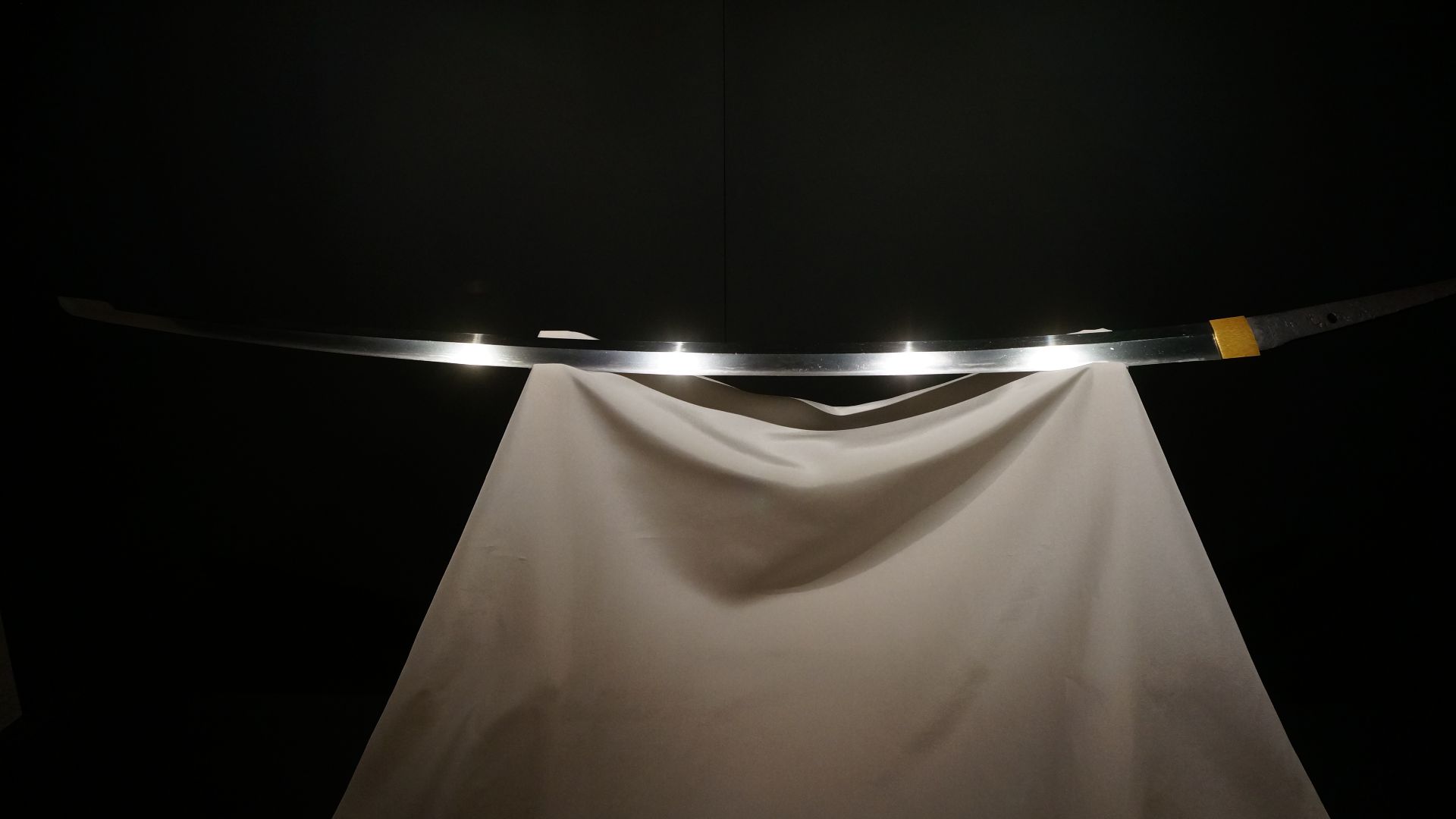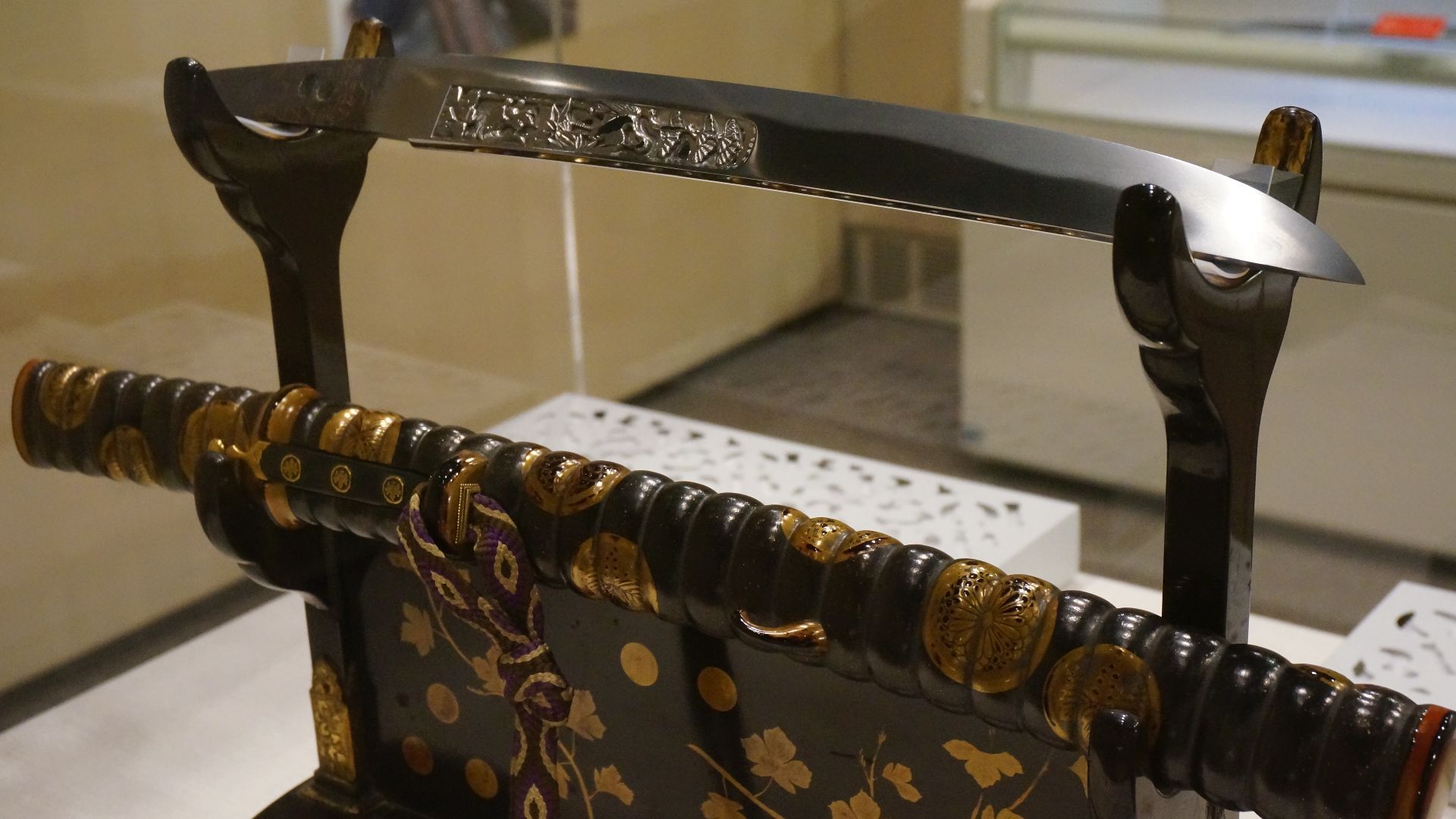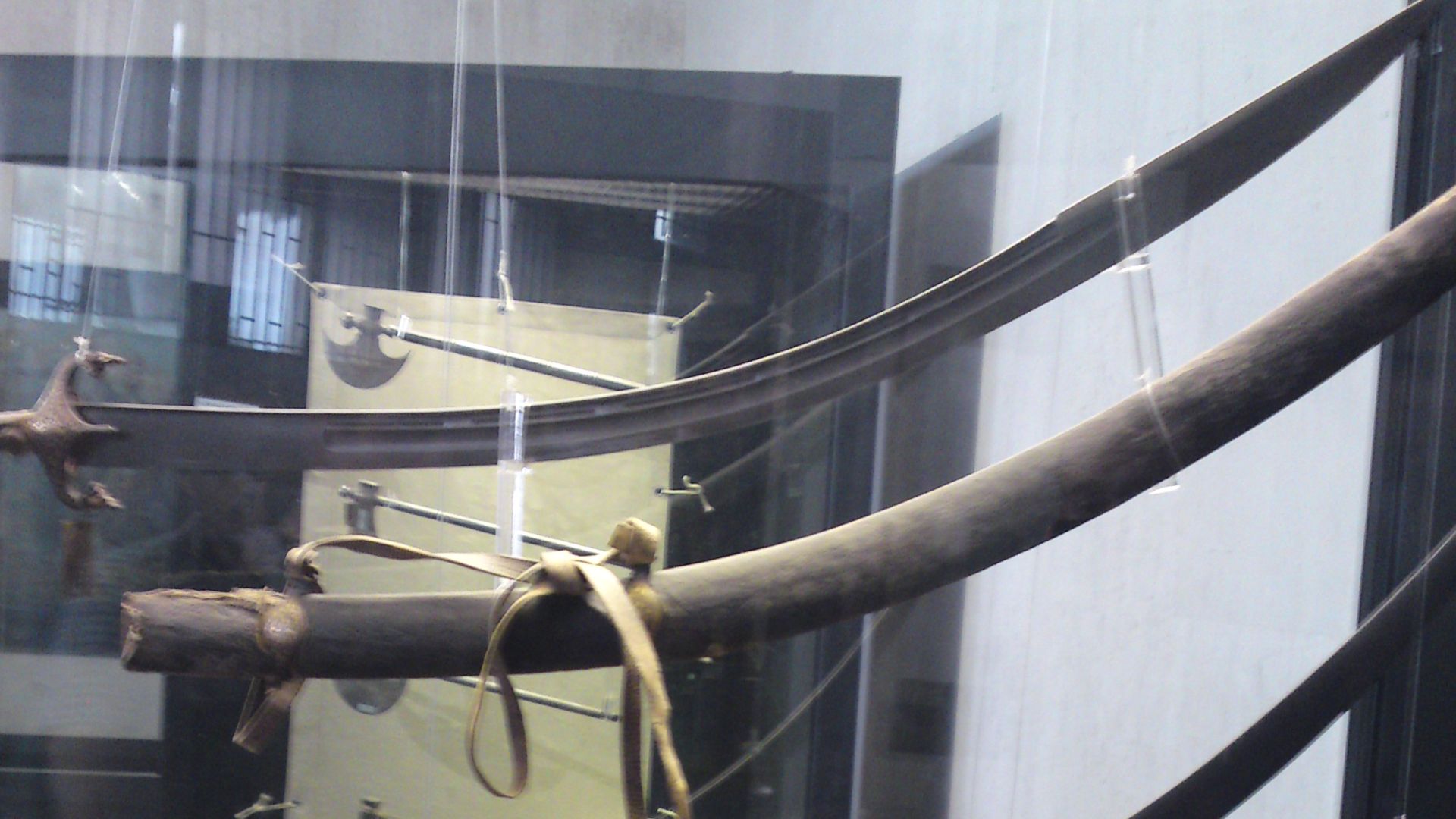Blades That Shaped Human History
Few objects in human history command as much awe as the sword. Forged in fire and carried by warriors and kings, it has been a tool of conquest, a mark of honor, and a symbol of power. Across centuries, certain blades gained near-mystical status, defining entire eras. Some were real, others shrouded in legend—but all left a mark that endures. Keep reading to uncover the 20 swords that changed history forever.
1. Honjo Masamune
From its birth in Masamune's forge around 1300, this remarkable katana would find its destiny through General Honjo Shigenaga's battle triumph, which gave the blade its name. As the Tokugawa shoguns' cherished symbol of power for generations, its post-WWII disappearance remains one of history’s greatest mysteries.
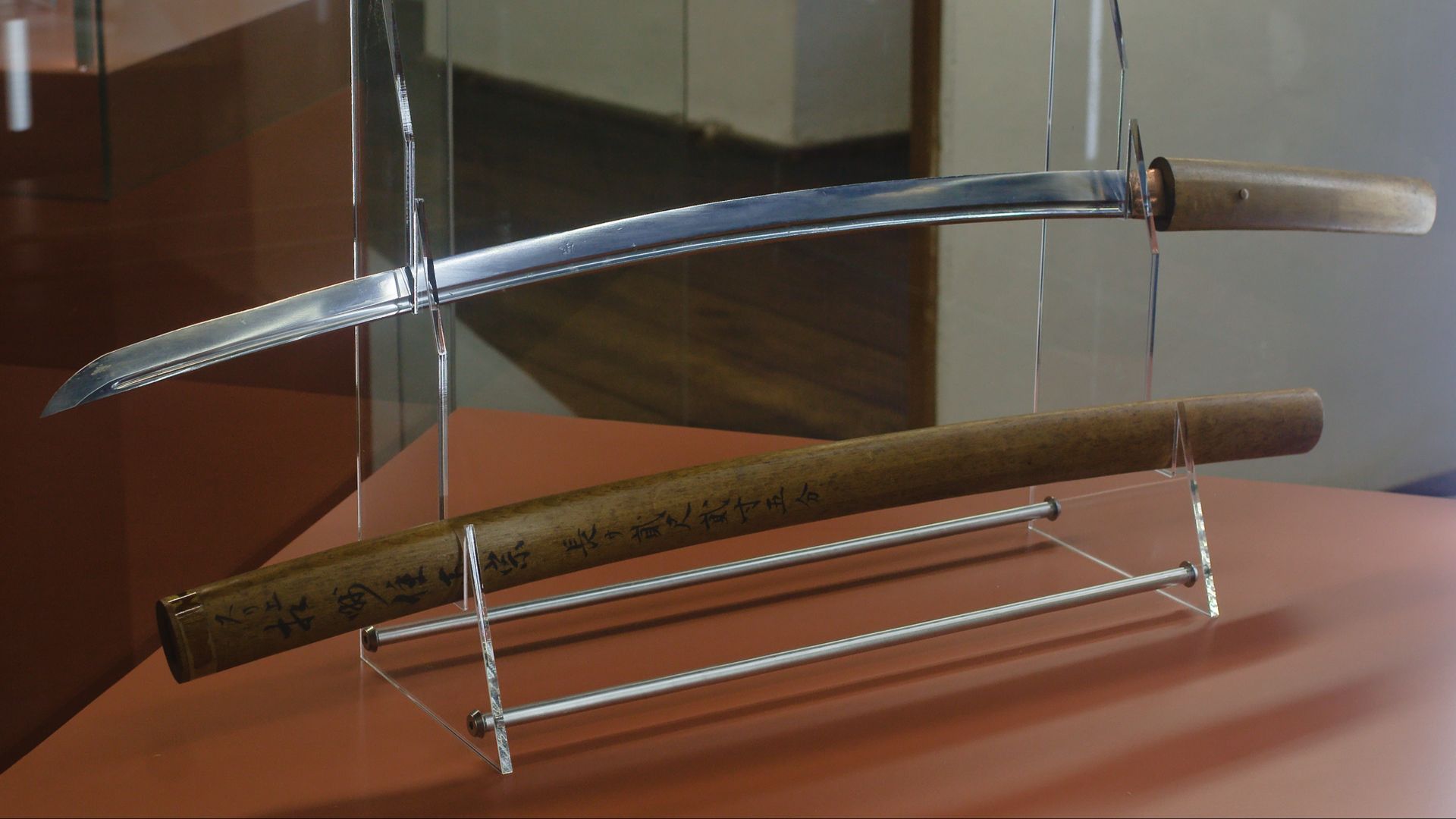 Christoph Waghubinger (Lewenstein) on Wikimedia
Christoph Waghubinger (Lewenstein) on Wikimedia
2. Sword Of Goujian
When archaeologists discovered an impossibly pristine bronze sword in a waterlogged Chinese tomb in 1965, its razor-sharp blade defied two thousand years of submersion. The mystery dissolved upon discovering advanced metallurgical techniques and royal inscriptions linking it to King Goujian of Yue's legendary weaponry.
3. Tizona
Preserved today as a revered museum piece, the one-meter-long Tizona sword symbolizes Spain's medieval heritage. This expertly forged steel blade gained immortal status in the hands of El Cid, the legendary knight who wielded it during his campaigns against Moorish forces.
4. Joyeuse
Today in the Louvre rests Joyeuse, its gold and enamel hilt still gleaming centuries after Charlemagne wielded this legendary blade. From its likely ninth-century origins through generations of French coronations until 1824, the sword has survived as proof of Carolingian power.
5. Wallace Sword
While scholars debate the authenticity of the legendary Wallace Sword, its thirteenth-century blade offers compelling physical evidence of its heritage. This colossal two-handed claymore, later fitted with a new hilt, now rests at Scotland's Wallace Monument.
 Glenn J. Mason from Edinburgh, Scotland on Wikimedia
Glenn J. Mason from Edinburgh, Scotland on Wikimedia
6. Zulfiqar
When Prophet Muhammad presented the double-bladed Zulfiqar to Ali ibn Abi Talib in the seventh century, it became a symbol of divine justice. The sword’s distinctive split tip gained fame after Ali’s valor in the Battle of the Trench, where it became an emblem of righteousness.
7. Seven-Branched Sword (Shichishito)
Though now preserved at Isonokami Shrine, this seven-branched iron sword reveals more about strategy than spirituality. The fourth-century diplomatic gift from Korea's Baekje kingdom to Japan merges sacred preservation with political heritage, its inscriptions documenting ancient East Asian diplomacy.
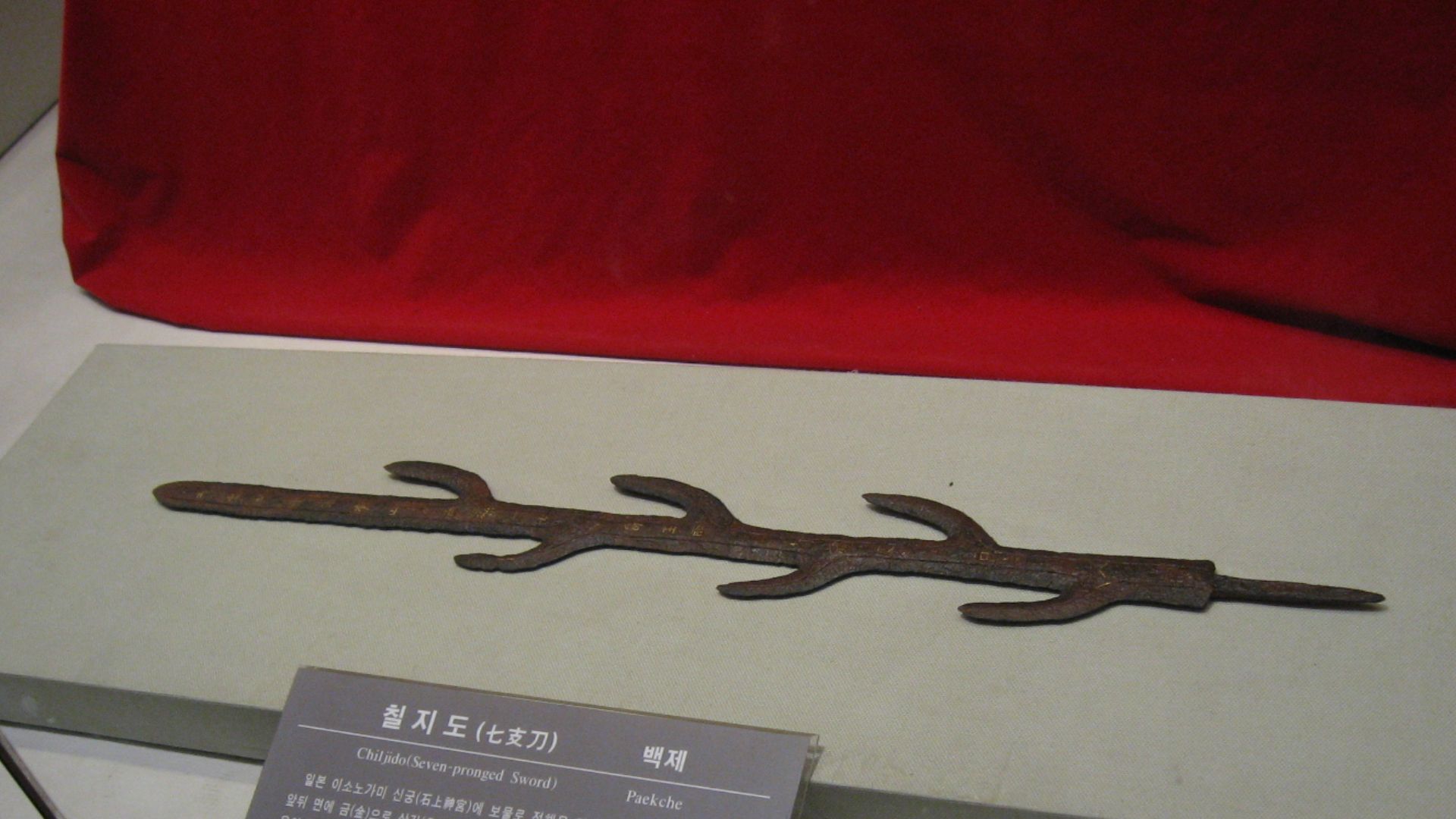 The user's homepage on Wikimedia
The user's homepage on Wikimedia
8. Curved Saber Of San Martín
Now displayed in Buenos Aires' National Historical Museum, this curved cavalry saber once rode with José de San Martín through South America’s independence wars. Its sharp curve made swift charges possible, and over time, it became a lasting emblem of the continent’s fight for freedom.
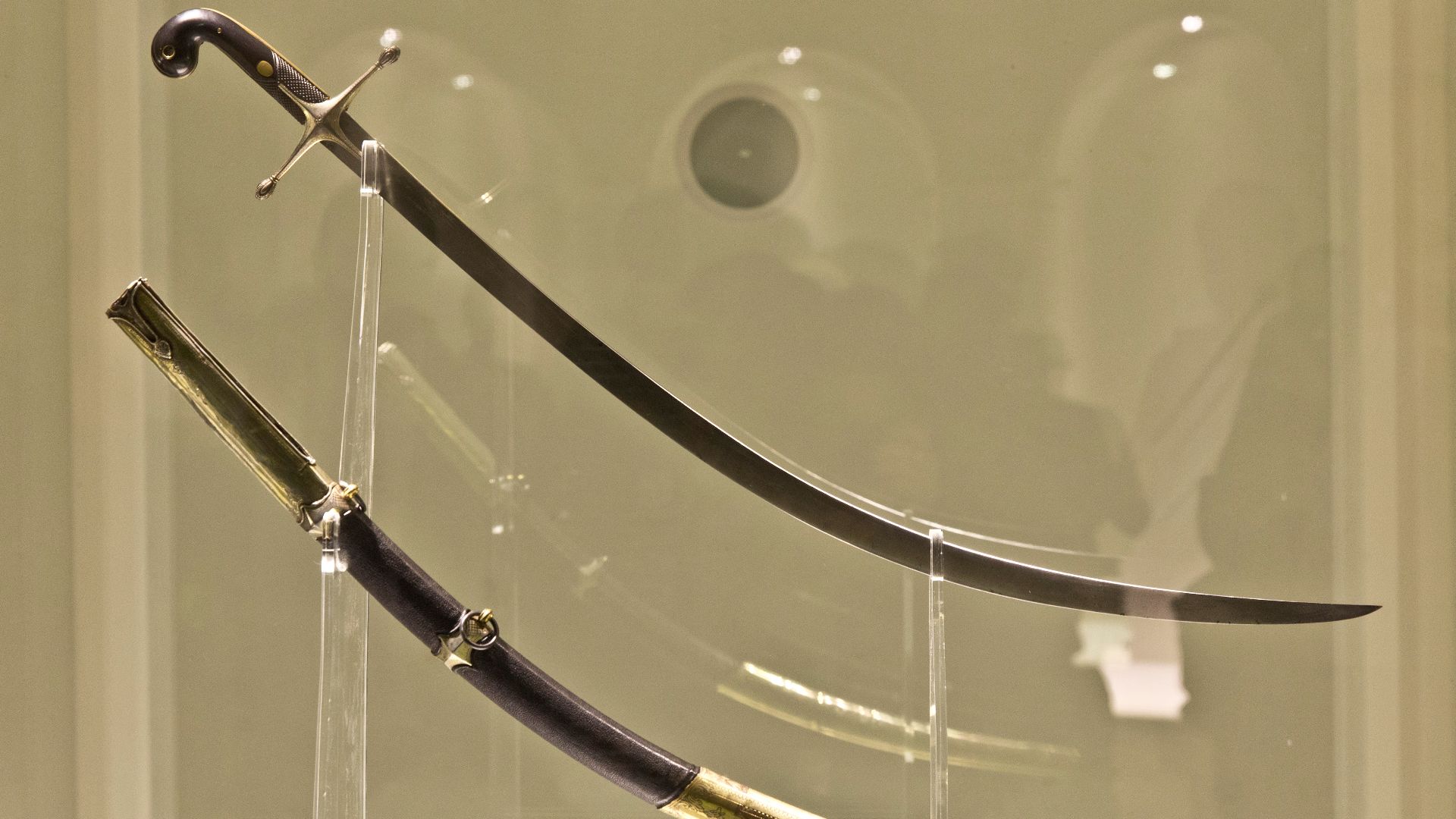 Ministerio de Cultura de la Nación Argentina on Wikimedia
Ministerio de Cultura de la Nación Argentina on Wikimedia
9. Curtana (Sword Of Mercy)
Historians regard the Curtana as proof of ceremonial continuity, tracing its role in British coronations to Edward the Confessor's 11th-century reign. With its blunted tip symbolizing mercy, the Curtana survived the turmoil of the English Civil War and remains a treasured piece of the Crown Jewels.
 The Deadly Sword Of Mercy - CROWN JEWEL of the UK! | Forged in Fire (Season 9) by Forged in Fire
The Deadly Sword Of Mercy - CROWN JEWEL of the UK! | Forged in Fire (Season 9) by Forged in Fire
10. Szczerbiec
Standing guard in Wawel Castle today, the gold-inlaid Szczerbiec represents centuries of Polish sovereignty. Since its 14th-century debut as the royal coronation sword, this legendary blade, said to have once notched itself on city gates, has crowned monarchs like Boleslaus the Brave.
11. Sword Of Saint Galgano
When modern metallurgists confirmed the medieval authenticity of a sword in Italy's Montesiepi Chapel, they validated more than metal and stone. They verified the remarkable tale of Galgano Guidotti, a 12th-century knight who drove his blade into stone to mark his extraordinary passage from warrior to saint.
12. Sword Of Osman
In a ritual that echoed through centuries of Ottoman rule, each new sultan's ascension hinged on a singular moment with the Sword of Osman. Preserved in Topkapi Palace, this fifteenth-century blade became the empire's most potent symbol of inherited authority and Islamic governance traditions.
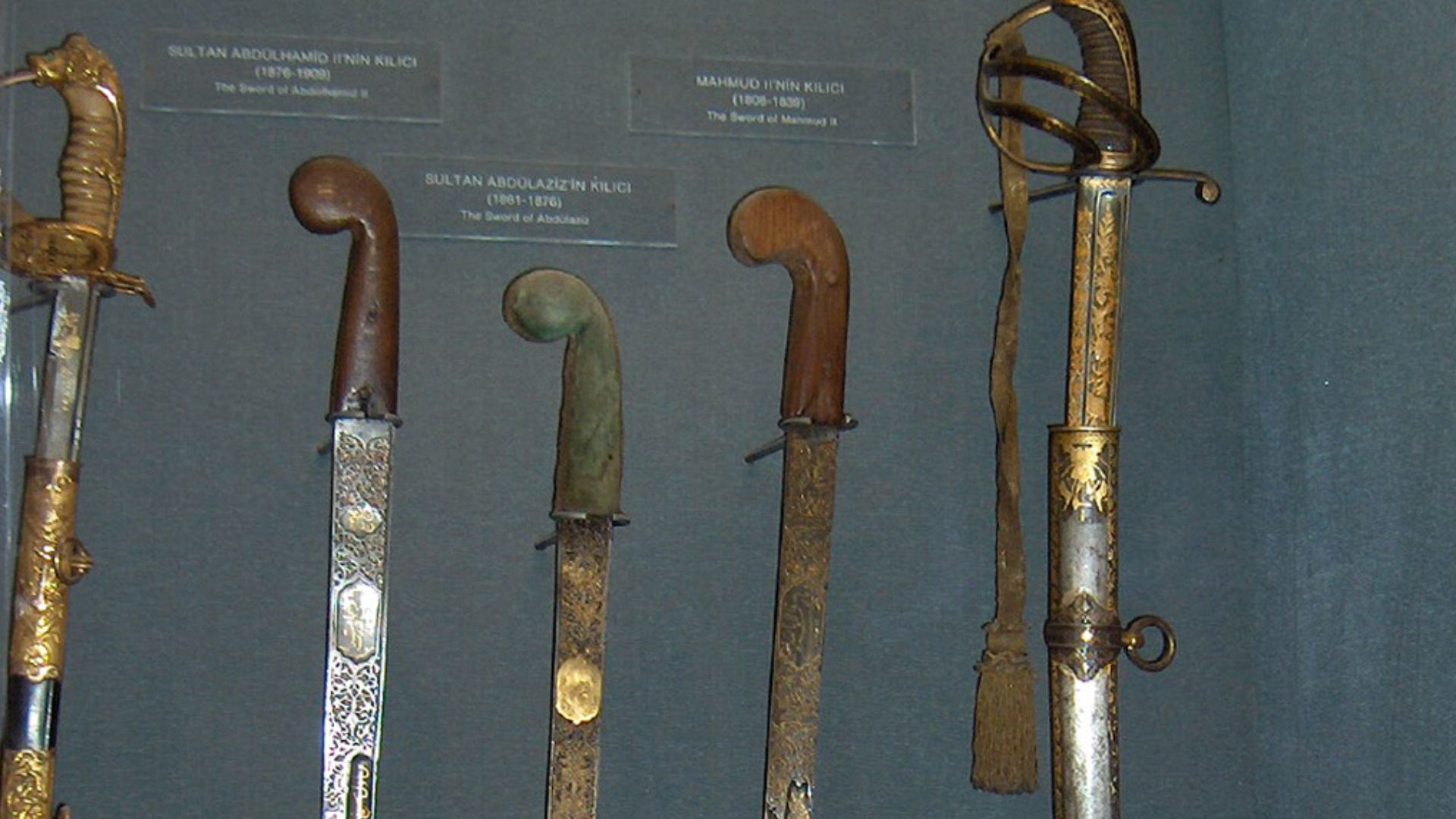 Georges Jansoone User : JoJan on Wikimedia
Georges Jansoone User : JoJan on Wikimedia
13. Sword Of Victory
In Thai culture, triumph takes magnificent form through the legendary Sword of Victory, its golden decorations and symbolic engravings telling tales of divine authority. This ornate ceremonial blade, a treasure among scholars, plays its role during royal coronations, symbolizing the monarchy's Buddhist traditions.
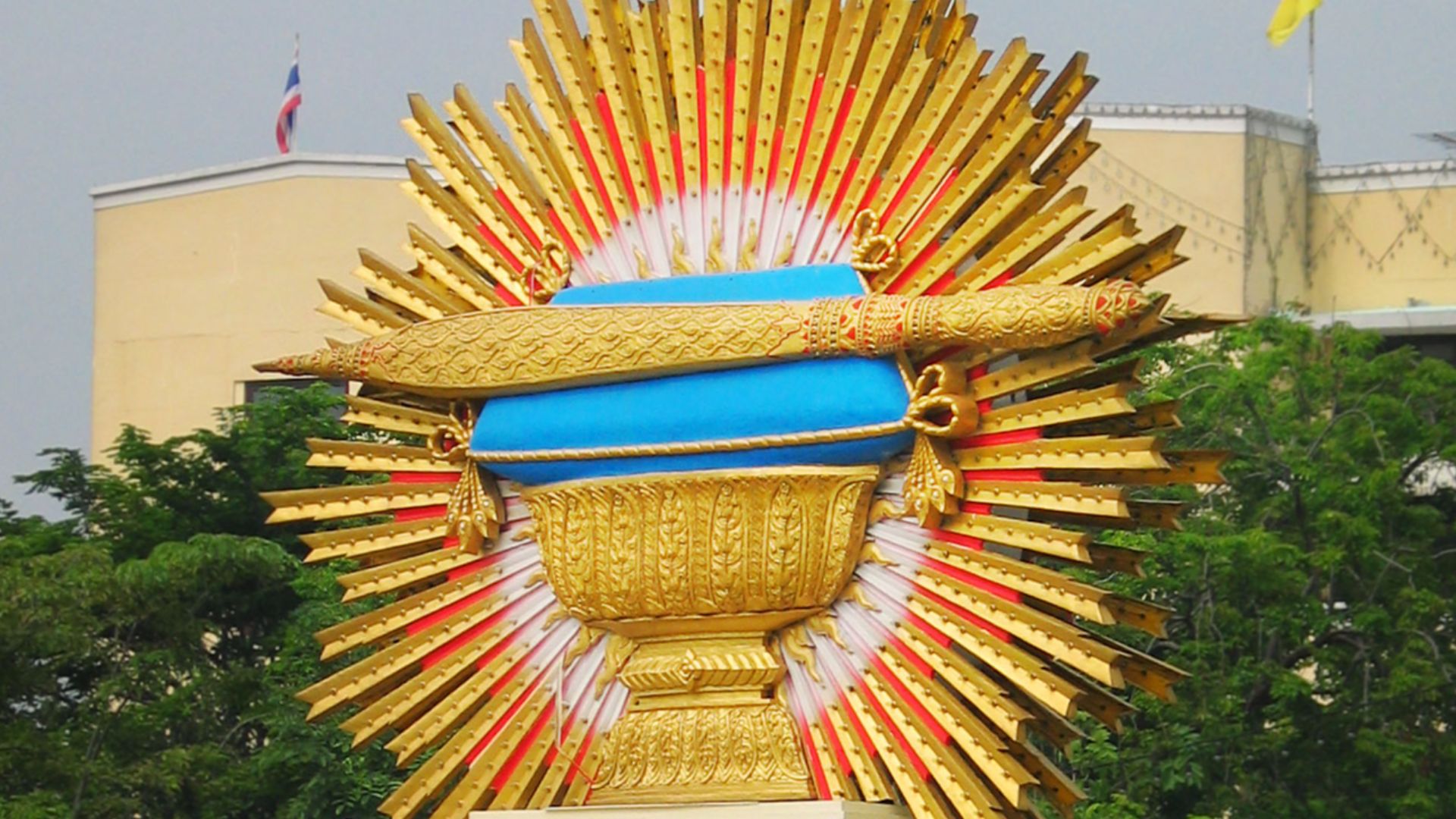 Heinrich Damm (User:Hdamm, Hdamm at de.wikipedia.org) on Wikimedia
Heinrich Damm (User:Hdamm, Hdamm at de.wikipedia.org) on Wikimedia
14. Christian III's Sword Of State
Now displayed in Rosenborg Castle, this Danish coronation sword represents far more than a royal ceremony. Christian III’s Sword of State became a powerful emblem of Denmark’s 16th-century shift, symbolizing the nation’s bold move from Catholic roots to a firmly Lutheran monarchy.
 The beauty of Danish king Christian III’s Sword of State made in 1551 by Tareq Sami
The beauty of Danish king Christian III’s Sword of State made in 1551 by Tareq Sami
15. Napoleon's Sword
Just as Napoleon's military genius commanded armies, his personal cavalry saber later commanded millions at a 2007 auction—its gold-embellished hilt bridging centuries of fascination. This ornate battlefield companion captures both Napoleon’s refined taste and his vast imperial ambition.
16. Colada
Of El Cid’s two famed swords, Colada stood as the mightier companion, celebrated in the Poem of the Cid. Wielded through brutal 11th-century battles, it earned the awe of foes and later rose beyond warfare to symbolize Spain’s spirit and heroism.
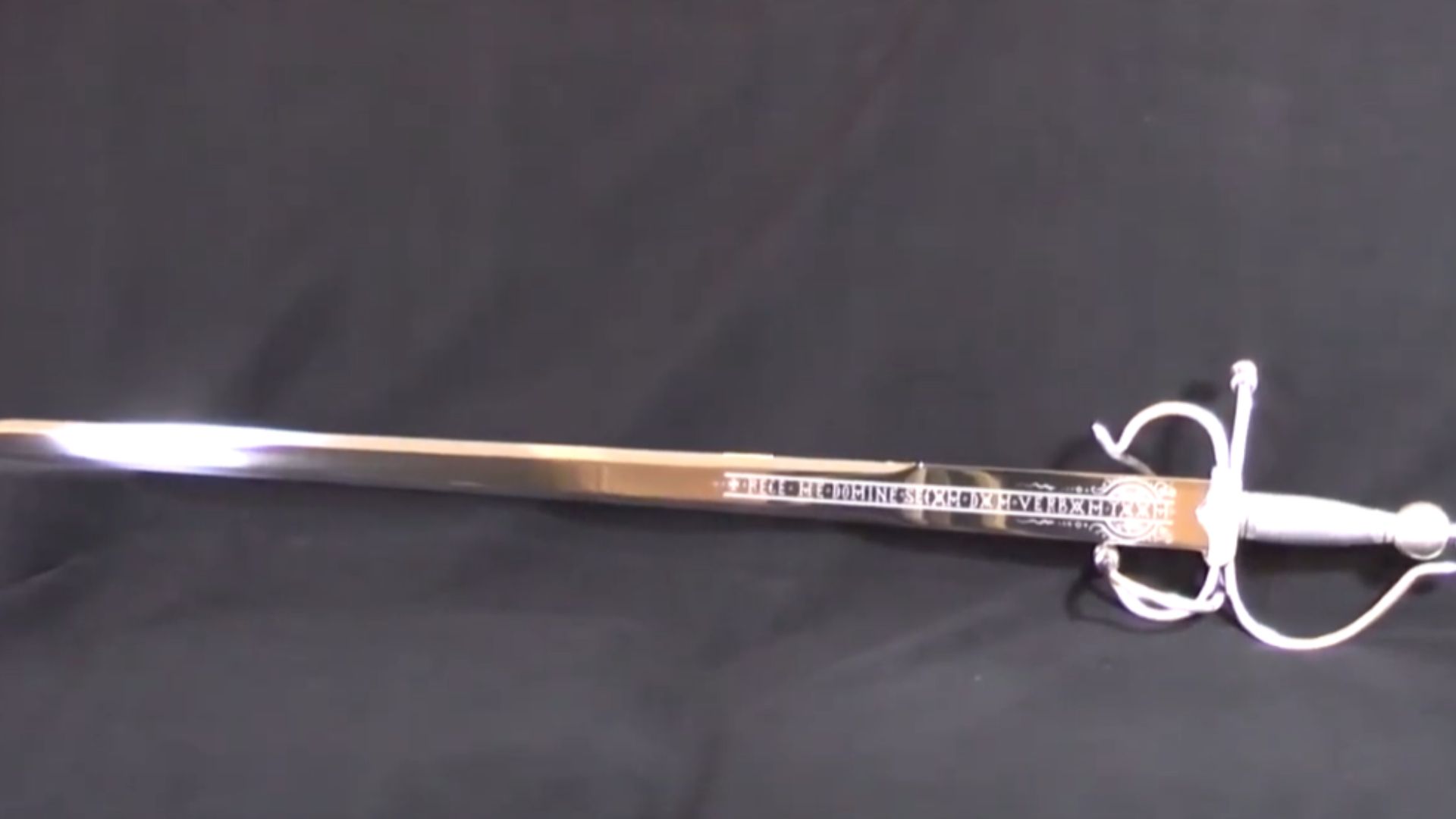 El Cid Colada Sword by Marto of Toledo Spain SFMA386S by SwordsFromSpain
El Cid Colada Sword by Marto of Toledo Spain SFMA386S by SwordsFromSpain
17. Doujigiri Yasutsuna
Among Japan's illustrious "Five Great Swords under Heaven," Doujigiri Yasutsuna earned its legendary status through tales of demon-slaying prowess. This remarkable 10th–12th century tachi, bearing master swordsmith Yasutsuna's signature, showcases the era's finest swordsmanship.
18. Mikazuki Munechika
Like a crescent moon etched in eternal steel, Mikazuki Munechika's signature hamon pattern captures the essence of Japanese swordmaking mastery. This elite tachi, signed by Sanjou in the 10th–11th century, became a luminous symbol in feudal samurai culture.
19. Nagasone Kotetsu
Among sword collectors worldwide, few names spark more reverence than Nagasone Kotetsu. The secret behind this Edo-period katana's legendary status lies in its master smith's revolutionary craft, which yielded unprecedented durability and edge retention that dominated duels and influenced centuries of Japanese swordmaking.
20. Sword Of Nader Shah
Passed through centuries of intrigue, this ornate Persian blade dates back to Nader Shah, the 18th-century conqueror who built the Afsharid dynasty. Its lavish design reflects his ambition and stands as a shining symbol of Persian power and imperial pride.
KEEP ON READING

Are Dreams Divine Messages from the Gods?
Alvin David on UnsplashYou might not think much of your…
By Christy Chan Dec 8, 2025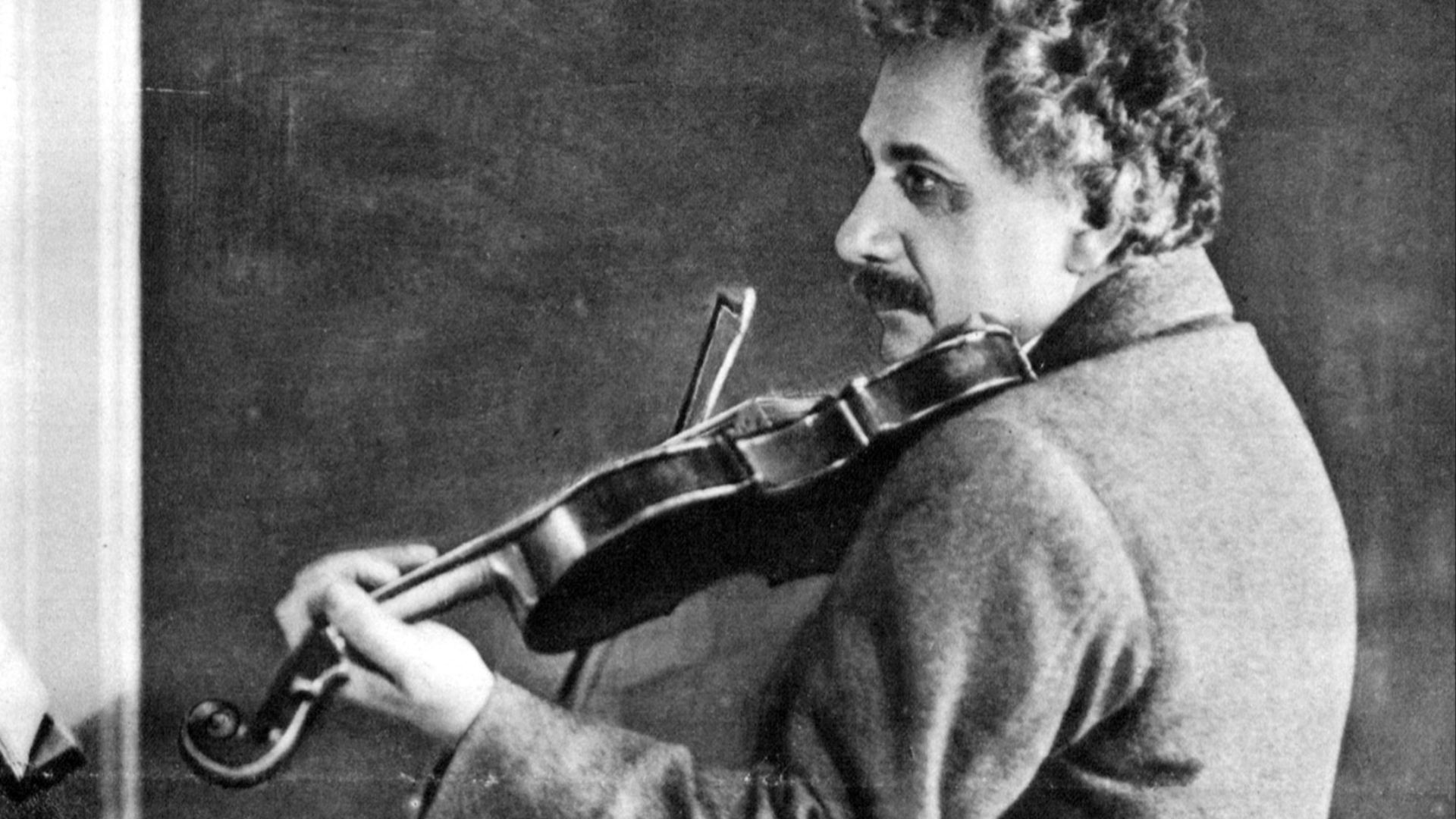
Einstein's Violin Just Sold At An Auction—And It Earned More…
A Visionary's Violin. Wanda von Debschitz-Kunowski on WikimediaWhen you hear…
By Ashley Bast Nov 3, 2025
This Infamous Ancient Greek Burned Down An Ancient Wonder Just…
History remembers kings and conquerors, but sometimes, it also remembers…
By David Davidovic Nov 12, 2025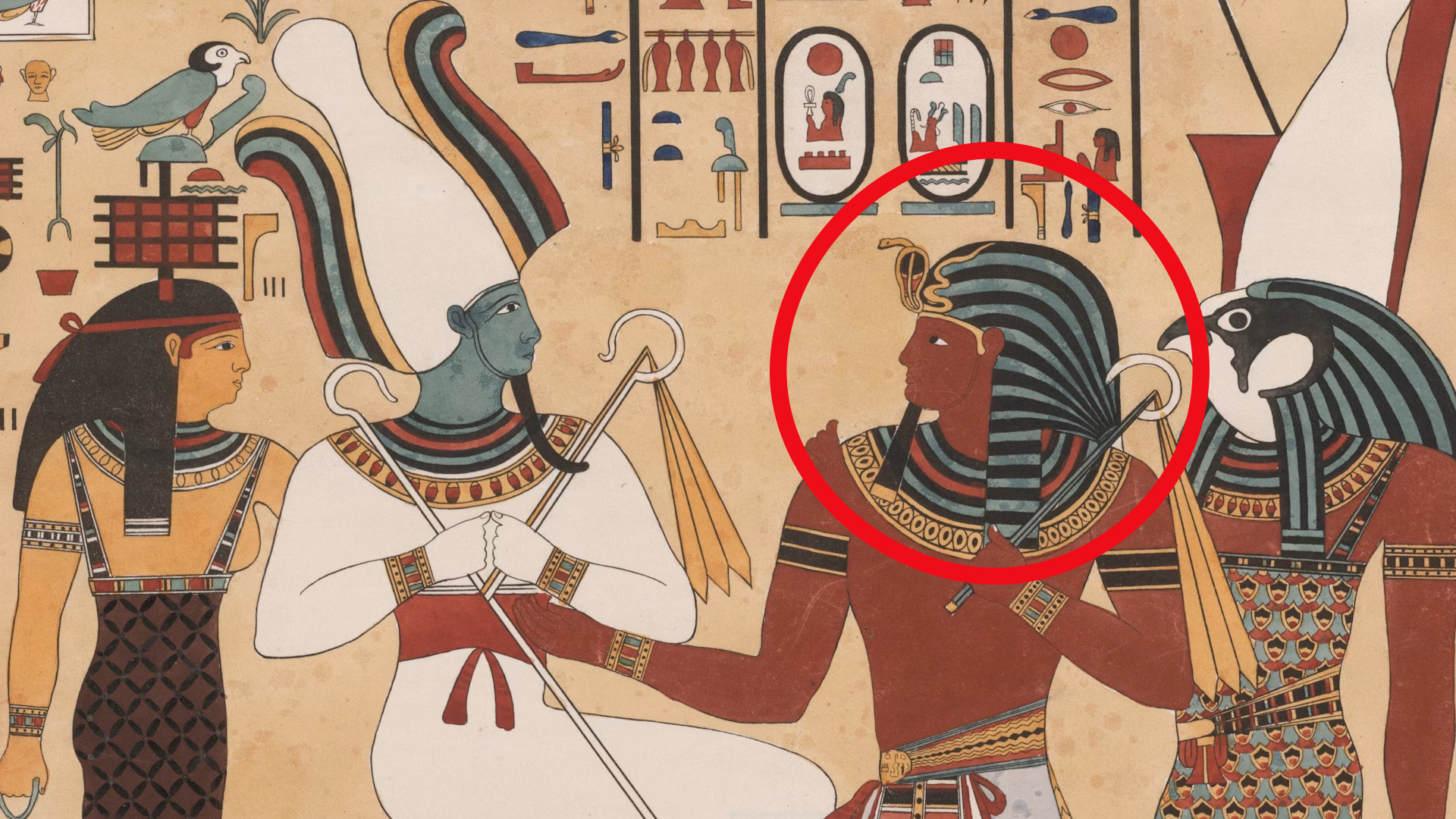
The Mysterious "Sea People" Who Collapsed Civilization
3,200 years ago, Bronze Age civilization in the Mediterranean suddenly…
By Robbie Woods Mar 18, 2025
20 Inventors Who Despised Their Creations
Made It… Then Hated It. Inventors often dream big, but…
By Chase Wexler Aug 8, 2025
20 Incredible Items In The British Museum People Say Were…
Mystery In History. The mighty halls of the British Museum…
By Chase Wexler Sep 8, 2025




